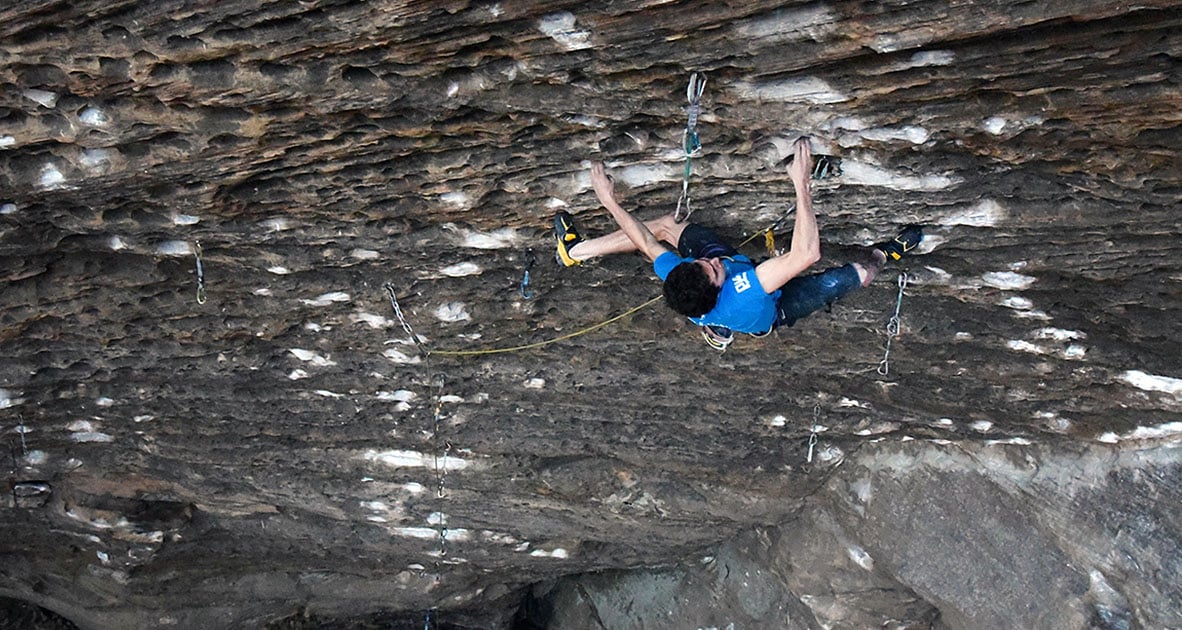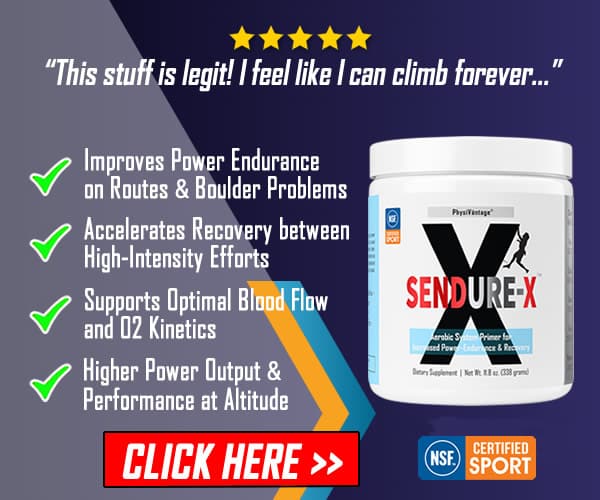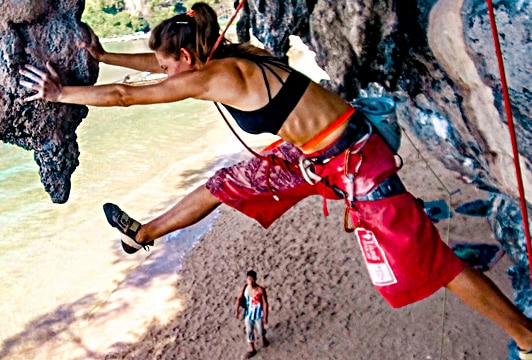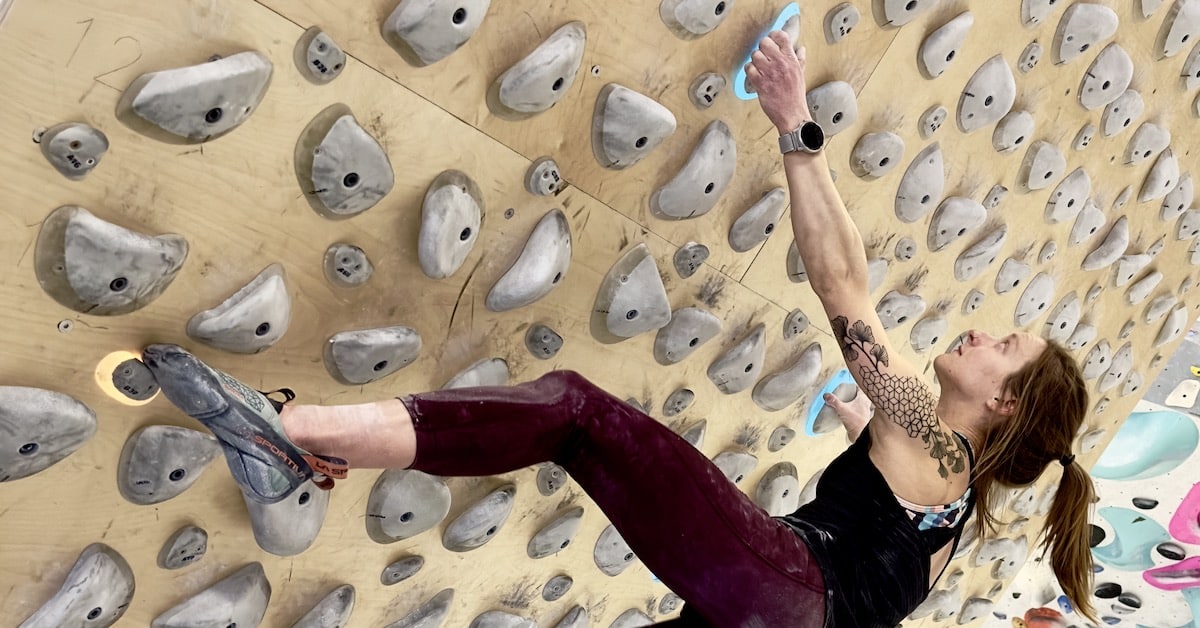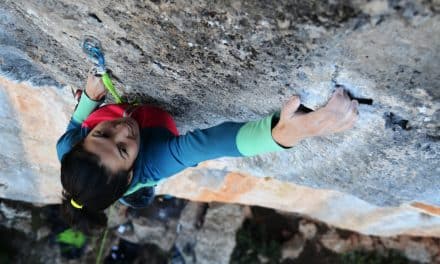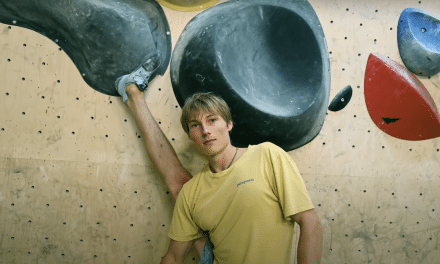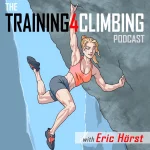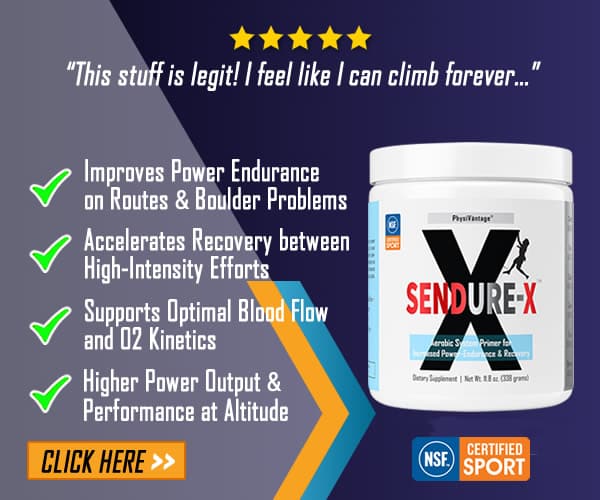Photo above: Jonathan Horst sending the relentlessly steep Southern Smoke (5.14c), Red River Gorge, KY.
(Originally published in 2019, but updated in 2025 with the latest supporting research on the synergistic endurance-boosting effects of beetroot extract and citrulline malate.)
Learn 5 Strategies to Boost Your Endurance on Pump-Heavy Climbs
Training to get stronger is great—but training to climb smarter is essential. While both strength and technique enhance performance, many climbers fixate on physical gains and overlook the value of efficient movement. Yes, elite climbers are strong—but the very best are also highly efficient in how they use that strength.
Improving your climbing economy directly boosts your endurance. Here are five proven strategies to help you climb harder, longer, and more effectively.
1. Climb Fast, Rest Smart
It sounds simple, but poor fuel economy plagues many climbers operating near their limit. Ask yourself: do you climb like a gas-guzzling Buick or a fuel-efficient Honda?
Efficiency takes intention. Try the following drills on moderate routes or in a safe gym environment:
-
Pre-plan your rest positions. Chalk up and recover only at those spots. Climb briskly from one rest to the next.
-
Limit time on holds. Aside from rest stances, spend no more than five seconds on any given hold. Move past small, pumpy holds quickly and avoid stalling in subpar rests. Get moving—VENGA. AUF GEHT’S. COME ON!
-
Vary your grip positions. Switch frequently between crimp, open hand, pinch, thumb lock, pockets, and jams—whatever the rock allows. Don’t miss a chance to sink a finger lock or hand jam—these often-overlooked grips are energy savers.
2. Embrace the “micro-rest”
Many climbers do not proactively recover on a route; they just let it happen. Calculated and intentional recovery, however, separates the best from the rest.
One proactive recovery strategy for improved climbing endurance, called a “micro-rest”, involves opening and closing your fingers or flexing your wrist in between each grip. Do this in the mere second or two it takes to reach from one hold to the next. Think about flicking water off your fingers or hand as you reach for the next hold. This subtle movement increases blood flow in the forearms, something that’s hard to achieve when gripping hard. Over the course of a route, these micro-recoveries can make a huge difference in reducing pump.
3. Spot and Use Game-Changing Rests
Finding a knee bar, toe-heel cam, or bomber hand jam can completely change the difficulty of a route. Miss them, and you might be climbing a full letter grade harder than necessary.
Crags like Rifle, the Red River Gorge, and many European sport areas are full of these hidden rests. For example, Adam Ondra’s send of Silence (the world’s first 5.15d) included two critical knee bars. Recognizing and maximizing these opportunities is an art that takes time and practice—start now!
4. Use the G-Tox Method… and Shake It Out

The “G-Tox” method for speeding recovery during rests for better climbing endurance.
Most climbers shake out by dangling one arm by their side—but there’s a more effective way: G-Tox.
Here’s how it works:
-
Alternate your resting arm every ~5 seconds between two positions:
-
Down by your side (traditional shakeout), and
-
Raised overhead (like you’re answering a question in class).
-
-
Do this for 30 seconds per arm, or as long as the rest allows.
Why it works: raising your arm above the heart enhances venous return—the process of draining deoxygenated, metabolite-rich blood from your forearms. By alternating this with the traditional shakeout, you help blood flow out and in, accelerating recovery. You might even see your pump drain as you raise your arm.
Read more about the G-tox here >>
5. Boost Circulation and Muscle Oxygenation (Naturally)
Two of the most researched natural supplements for endurance athletes are beetroot and citrulline malate.
-
Beetroot improves vasodilation, increases muscle oxygenation, and enhances blood flow. Studies show a 7.1% increase in muscle efficiency (Larsen, 2007) and a 15% improvement in time to exhaustion during high-intensity efforts (Lansley, 2011).
-
Citrulline malate, a compound found in watermelon, has been shown to speed ATP replenishment by 20% (Bendahan, 2002). A 2019 meta-analysis of 12 placebo-controlled studies confirmed its significant performance benefits, including improved grip strength (Jordan, 2016).
- A 9-week randomized, double-blind, placebo-controlled trial (Burgos 2021)showed that supplementing daily with citrulline (3 g/day) + beetroot (2.1 g/day) improved aerobic performance (VO2max).
- In a randomized, double-blind, placebo-controlled crossover trial (Viribay1 2024), elite rowers consuming citrulline (6 g/day) + beetroot extract (3.5 g/day) for 1 week improved lactate clearance (i.e. recovery) after high-intensity efforts and modestly increased peak power in performance tests versus placebo.
To harness these effects, PhysiVāntage developed Sendure X—a first-of-its-kind supplement to combine beetroot extract, citrulline malate, and betaine (a molecule found in beetroot sugar that may boost power) to create a synergistic endurance-enhancing pre-workout/pre-climb drink. Consuming Sendure X during warm-up climbing primes the working muscles for optimal blood flow and enhanced performance. Anecdotally, many climbers report a slower rise in the “pumped” feeling during near-maximal climbing as well as a faster rate of recovery at rest positions, or between boulders and routes.
Learn more at PhysiVāntage.com
RELATED ARTICLES:
- Podcast #26: Effective Training of the Climbing-Specific Aerobic Energy System
- Podcast #40: Blood Flow Restriction Training for Climbers
- Cameron Hörst’s Proven Strategy for Endurance Training
- Aerobic Versus Anaerobic Training for Climbing
- How To Develop Stronger Finger Tendons and Pulleys
Copyright © 2000–2025 Eric J. Hörst | All Rights Reserved | Hörst Training, LLC

